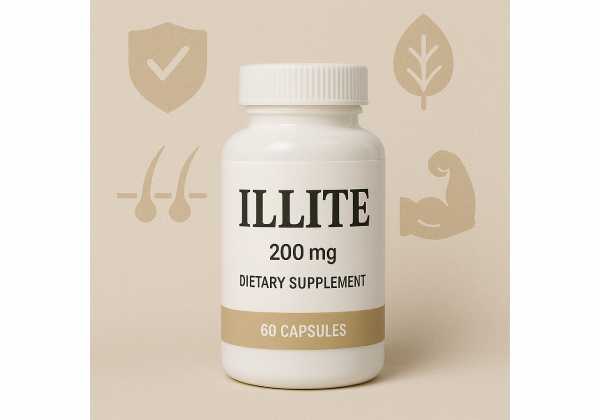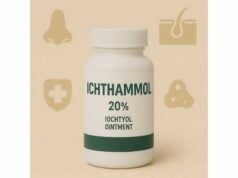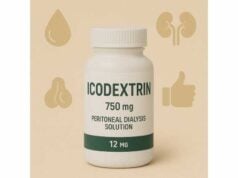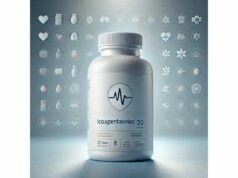
Illite is a naturally occurring clay mineral widely used in skin care, personal care, and industrial applications because of its ability to absorb oils, bind moisture, and interact with dissolved substances. In cosmetics, illite appears in masks, cleansers, and scalp pastes for mattifying shine and supporting gentle detox routines. In agriculture and environmental settings, illite may be blended with other clays to bind contaminants or improve feed flow properties. This guide explains what illite is, how it works, where it helps (and where it does not), practical usage tips, appropriate ranges for topical formulas, and safety considerations so you can make informed, people-first decisions. You will also find a concise summary of the evidence and a short checklist for choosing a trustworthy product, especially if you are using illite on sensitive skin or as part of a professional service.
Quick Overview
- Helps mattify oily skin and scalp by absorbing sebum and moisture (rinse-off use).
- May bind impurities and some metals; useful in clay masks and cleansing pastes.
- Typical clay mask blends use 20–60% total clay by weight; illite leave-on products, if used, are usually ≤1–5%.
- Avoid inhaling fine powders; people with reactive airways, broken skin, or known clay allergies should not use.
Table of Contents
- What is illite and how it works
- Evidence-based benefits and limitations
- How to use illite in practice
- Dosage forms and ranges
- Safety, side effects, and who should avoid
- Quality: choosing a trustworthy product
What is illite and how it works
Illite is a non-swelling phyllosilicate (layered aluminosilicate) and a member of the mica-like clay family. At the microscopic level, its structure resembles a sandwich: two silica tetrahedral sheets surround an alumina octahedral sheet. Poorly hydrated potassium ions sit between these layers and help lock them together. Because these interlayer spaces are not easily penetrated by water, illite does not expand substantially when wetted. This non-swelling nature distinguishes illite from smectite clays (like bentonite), which widen their layers and take in more water.
From a practical standpoint, this structure leads to three properties that matter for real-world use:
- Adsorption and binding. Illite has surface charge sites and a moderate cation-exchange capacity (lower than smectites, higher than kaolinite). It can bind selected dissolved species, including some metals and organic molecules, and can act as a fining or clarifying aid in rinsed products.
- Oil and moisture uptake. Finely milled illite can absorb sebum and water, creating a temporary mattifying effect on skin and scalp. In masks, this helps with shine control and a “clean” post-rinse feel without the tight pull associated with highly swelling clays.
- Rheology and texture support. In formulations, illite adds body and spreadability, helping a paste hold on the skin during the masking window and rinse off without excessive residue.
Illite forms naturally in soils and sediments where micas and feldspars weather. It is common in marine and terrestrial clays and appears in varied colors (from light green to beige or red-tinted) depending on trace mineral content. Industrial suppliers typically wash, micronize, and sieve illite to achieve repeatable particle sizes for personal-care use.
In short, illite is a stable, non-swelling clay with balanced oil and moisture uptake, useful when you want cleansing and mattifying effects without the dramatic swelling behavior of bentonite.
Evidence-based benefits and limitations
Primary benefits in personal care
- Sebum control in oily or combination skin. Illite reduces surface shine by absorbing oil and moisture. When blended with kaolin or a small proportion of smectite, it offers a “just-right” mask feel: firm enough to set, soft enough to rinse clean.
- Gentle clarifying action. By binding some dissolved substances at the surface, illite can assist in removal of pollutants, sweat residues, and product buildup in rinse-off formats. Users often report a smoother, fresher feel and less visible congestion after a series of masks.
- Scalp support. In scalp pastes and pre-wash treatments, illite can help reduce oiliness at the roots and limit the feeling of heaviness between washes.
Where illite fits compared with other clays
- Versus bentonite (smectite): Bentonite swells and gels strongly, offering maximal oil and water uptake but with a higher risk of over-drying if left too long. Illite has milder swelling and is thus easier to formulate into masks that don’t crack as quickly.
- Versus kaolin: Kaolin is very gentle, with low cation exchange and low oil uptake. Illite offers more adsorption and mattifying power than kaolin alone, making it a popular partner in balanced blends.
Industrial and environmental contexts
- Binding and anticaking. In agriculture and feed manufacturing, illite is often part of natural clay mixtures used as binders and anticaking agents to improve flow and pellet quality.
- Adsorption in remediation. Illite’s surface sites can capture selected ions and organics. While not the highest-capacity sorbent compared with engineered materials, it is abundant and cost-effective for large-scale, lower-severity applications.
Limitations to keep in mind
- Not a stand-alone medical treatment. Illite in consumer masks does not treat skin diseases. It can support routines aimed at oil control and gentle cleansing but does not replace targeted dermatologic therapies.
- Powder inhalation risk. Like many fine mineral powders, airborne dust can irritate the airways. Sensible handling and wet processing mitigate this risk.
- Trace mineral variability. Natural clays may contain trace metals depending on the deposit. Responsible manufacturers source, test, and refine material to meet cosmetic grade specifications.
Bottom line: illite is a well-characterized clay whose benefits—mattifying, gentle clarifying, and texture support—are strongest in rinse-off formats. It is best used as part of a blend tailored to skin type and desired feel.
How to use illite in practice
For facial masks (home use)
- Choose a cosmetic-grade powder or premixed paste. Look for documentation about heavy metal testing and microbial limits.
- Blend and hydrate. If using powder, mix with water or hydrosols to a spreadable paste. For comfort, include humectants (e.g., glycerin) or botanical oils if your skin runs dry.
- Application thickness. Aim for a uniform 1–2 mm layer. Thicker layers dry unevenly; thinner layers lose contact time.
- Timing. Leave on 5–10 minutes, misting lightly if it begins to crack. Over-drying can disrupt the skin barrier.
- Rinse thoroughly and moisturize. Follow with a replenishing moisturizer to restore lipids and hydration.
- Frequency. Oily skin: up to 2–3 times weekly. Combination skin: 1–2 times weekly. Dry or sensitive skin: start once weekly or try T-zone-only application.
For scalp care (pre-wash paste)
- Apply a thin layer to the scalp (not lengths), wait 5–10 minutes, and shampoo as usual. This helps lift oils and styling residue without harsh surfactants. Use weekly or as needed.
For body care
- In areas prone to sweat and friction (back, chest), a short mask session can help minimize shine and residue before events or athletic activities. Keep sessions brief and always moisturize after.
Formulation tips for makers and professionals
- Pairing clays. A balanced blend might include illite (structure, adsorption), kaolin (gentleness), and a small fraction of bentonite (boosted uptake), adjusted to the client’s oiliness and climate.
- Humectant buffering. Adding 2–5% glycerin (in the water phase) reduces tightness on dry or sensitive skin while maintaining mattification.
- Avoidance of fragrance overload. Fragrances and essential oils can irritate after exfoliation or adsorption-heavy masks; keep them low or omit.
- Rinse behavior. If rinse is tacky, reduce gum thickeners or add a small amount of kaolin to improve slip.
Do not ingest cosmetic illite or apply to open wounds. Illite is not intended or approved as an internal human supplement.
Dosage forms and ranges
Because illite is a mineral clay used primarily in topical and industrial contexts, “dosage” is best expressed as percentage by weight in a product or as application frequency rather than milligram-per-kilogram human intake. Practical ranges:
- Rinse-off facial masks (consumer): Total clay content commonly 20–60% w/w. Within that total, illite may comprise 20–100% of the clay fraction depending on desired feel.
- Leave-on mattifying lotions or primers: Use low levels to minimize residue—typically ≤1–5% w/w of very fine illite, often alongside silica or starch for a soft-focus finish. Patch test first; many users prefer rinse-off formats for higher clay loads.
- Scalp pre-wash pastes: 20–40% w/w total clay (with illite as a major component) in a paste base; apply thinly, once weekly or as needed.
- Professional services (spas): Estheticians often vary clay ratios across zones (e.g., higher illite in T-zone, lower on cheeks) and modulate contact time to avoid over-drying.
Industrial and agricultural references (contextual, not for human self-use)
- Natural mixtures containing illite (with montmorillonite and kaolinite) are used as binders and anticaking agents in animal feeds under specified maximum inclusion rates (for example, up to tens of grams per kilogram of complete feed depending on species and formulation). These parameters are for manufacturing and veterinary contexts, not human consumption. Consumers should not repurpose agricultural clays for personal use.
Frequency guidance (topical)
- Start low. For oily skin, 1–2 masks weekly may suffice; increase to 3 if tolerated. For combination or dry skin, once weekly or “multi-masking” (T-zone only) is usually better. Monitor for tightness or flaking and adjust contact time and moisturization.
Measuring and handling
- Use clean, dry utensils. Minimize dust by adding powder to water, not the reverse, and by working at bench height rather than shaking containers near face level.
Safety, side effects, and who should avoid
General cosmetic safety
Cosmetic-grade illite, as part of naturally sourced clays, is considered safe in the ways and concentrations used in modern personal-care products when formulated to be non-irritating and used as directed—especially in rinse-off formats such as masks and cleansers. Safety assessments of commonly used clays emphasize low dermal toxicity, low systemic absorption through intact skin, and overall favorable tolerance profiles in typical cosmetic practice.
Likely side effects (usually mild and temporary)
- Dryness or tightness after longer mask times or in low-humidity environments.
- Transient redness if scrubbing during rinse-off.
- Flaking if used too frequently without adequate moisturization.
Less common risks
- Irritation or contact dermatitis in sensitive individuals (often related to product fragrance or other components rather than the clay itself).
- Airway irritation from inhalation of powder during handling. Always minimize dust and avoid aerosolized applications.
Who should avoid or take extra care
- Individuals with active eczema, psoriasis, or compromised skin barrier on the intended area—unless directed by a clinician.
- Those with reactive airways (e.g., asthma) if using loose powders. Choose ready-to-use pastes and avoid dust.
- People with known allergies to clay-based products or to specific formula additives.
- Open wounds or infected skin: do not apply clay masks to these areas.
- Ingestion: illite products marketed for the skin are not meant to be swallowed. Do not use internally.
Pregnancy and breastfeeding
Topical, rinse-off cosmetic use is generally considered compatible. As always, minimize unnecessary exposure to fragrance allergens and avoid mask applications on broken or irritated skin.
Children and teens
For adolescents with oily skin, illite masks can be helpful when used conservatively and followed by moisturization. Younger children should use such products only under caregiver guidance.
Occupational handling
Professionals who decant or blend powder should use dust control (local ventilation, masks as appropriate) and standard hygiene to prevent inhalation and cross-contamination.
Emergency guidance
If significant accidental inhalation, eye exposure, or ingestion occurs, follow local poison control guidance. Rinse eyes with water for several minutes and seek care if irritation persists.
Quality: choosing a trustworthy product
1) Source and grade
- Prefer suppliers that clearly identify cosmetic or pharmaceutical grade material and provide documentation of heavy metal testing (lead, arsenic, cadmium, mercury) and microbial limits. The geographic source alone does not guarantee purity; it’s the refinement and testing that matter.
2) Particle size and feel
- Finer grades spread more evenly and feel smoother but can dust more readily when dry. Look for micronized powders designed for topical use or select ready-to-use pastes to avoid dust altogether.
3) Color and trace minerals
- Green or red hues usually reflect trace iron oxides or other minerals and primarily affect appearance, not performance. Choose based on skin tone preferences and staining risk for towels.
4) Formulation transparency
- For blends, check the clay breakdown (e.g., illite + kaolin + smectite) and any added humectants or soothing agents (e.g., glycerin, panthenol). Fragrance-free options suit sensitive skin.
5) Packaging and handling
- Moisture-tight containers prevent clumping. Use clean scoops; avoid introducing water into bulk powder jars to limit microbial growth.
Simple usage checklist
- Patch test new products.
- Keep masks damp during use to reduce tightness (light misting helps).
- Limit contact to 5–10 minutes for the face; moisturize afterward.
- Start once weekly and adjust to your skin’s response.
- Avoid inhaling powder; choose paste formats if you’re dust-sensitive.
References
- USGS OFR01-041: Illite Group Minerals 2001.
- Amended Safety Assessment of Naturally-Sourced Clays as Used in Cosmetics 2023 (Guideline).
- Safety and efficacy of natural mixture of illite, montmorillonite and kaolinite for all animal species 2017.
- Commission Implementing Regulation (EU) 2019/10 of 3 January 2019 concerning the authorisation of a preparation of a natural mixture of illite-montmorillonite-kaolinite as a feed additive for all animal species 2019.
- Comprehensive Review on the Interactions of Clay Minerals with Nutrients and Contaminants in the Gastrointestinal Tract of Animals 2022 (Systematic Review).
Disclaimer
This information is educational and does not replace personalized advice from a qualified health professional. Illite and other cosmetic clays are intended for external, rinse-off use unless a clinician directs otherwise. Do not ingest cosmetic-grade clays. If you have a skin condition, are pregnant, breastfeeding, or have concerns about allergies or dust exposure, consult your healthcare provider before use. In the event of accidental ingestion or significant eye exposure, follow local poison control instructions and seek medical attention.
If you found this article helpful, please consider sharing it on Facebook, X (formerly Twitter), or your favorite platform, and follow us for more evidence-based guides. Your support helps us continue producing high-quality content.










